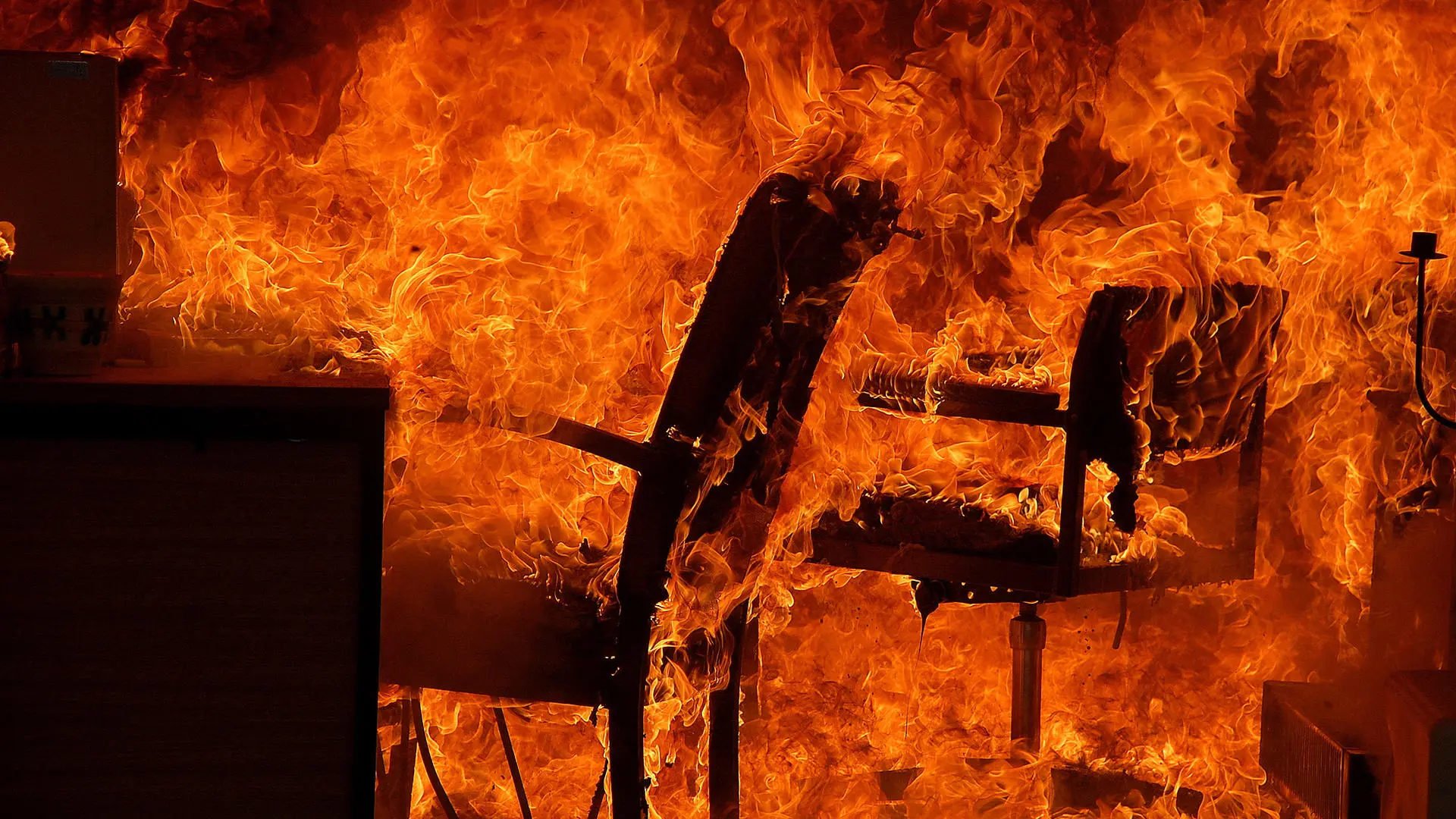Ease of extinction tests
Polymers and composites are being steadily improved, as their various applications increase rapidly. In most cases the materials must pass a variety of tests that range from flammability and smoke release to effluent toxicity. There are also fire test methods that can provide quantitative relative ranking of fire resistance. These are also called small-scale extinction fire tests.

Our equipment and facilities
Limiting Oxygen Index (LOI)
Limiting Oxygen Index (LOI) is the percent concentration of oxygen at which a small specimen will only just burn downwards in a candle like manner. The aim is to test the flammability of the sample with a small pilot flame to find the minimum oxygen concentration required to just sustain combustion of the sample.
The test result is on a numerical scale which simplifies comparison of materials. It is very repeatable and is used for quality assurance and to indicate the potential flammability of a material. However it is essentially a small flame test and while a high index is indicative of a less easily ignited and less flammable material, materials with high limiting oxygen index (LOI) values (i.e. greater than 21) undergo flaming combustion at oxygen concentrations below 5%, in a fully developed, real fire. This is one of the very few test apparatus where steady burning conditions can be replicated on a small scale.
Temperature index (ISO 4589 - 3)
Temperature index (ISO 4589-3) two variants on LOI – determination of the temperature at which downward flame spread occurs, or an oxygen index at elevated temperatures.
Temperature Index (TI) is the temperature at which a small specimen will only just burn downwards in a candle-like manner in air (21% oxygen). The test was developed from the limiting oxygen index test. The apparatus is essentially similar to that of the limiting oxygen index test but the vertical specimen tube and the incoming combustion gas is heated. The aim is to test the flammability of the sample with a small pilot flame to find the minimum temperature required to just sustain combustion of the sample in air.
An alternative technique is to determine the limiting oxygen index using the standard method at different temperatures. Systems are also used where the temperature of the jacket can be increased to determine the temperature at fixed oxygen concentration.
The LOI and TI techniques can be combined is to determine the limiting oxygen index, using the standard method, at different temperatures.
The LOI and TI are essentially ease of extinction tests – a flame will only propagate down the polymer sample if the radiant heat transferred from the flame to the polymer is sufficient to vaporise enough fuel to replace it. As the oxygen concentration is decreased, the flame is diluted by nitrogen, increasing in size, and also reducing the radiant heat transferred to the polymer, until it is so large, the concentration of the flame propagating free radical species falls below a critical threshold, and the flame goes out. This is illustrated for three oxygen concentrations. If the test is run in high oxygen concentrations, a small, very intense white flame is observed.
Non-combustibility test
Non-combustibility test for materials and heat emission from building materials (BS 476:4, BS 476:11, EN ISO 1182 and IMO FTPC Part 1) a building industry standard used to differentiate between non-flammable materials, such as plaster-based wall linings and materials which undergo flaming combustion.
Specimens, which are typically construction materials are lowered into a furnace, and a thermocouple is placed adjacent to them.
During a test, the temperature of the furnace, specimen surface and specimen centre thermocouples are recorded every 0.5 seconds and the temperatures displayed on a graph in real time. Also the initial maximum and final temperatures recorded by the three thermocouples are displayed during the test run. Combustibility is identified as a sudden increase in sample temperature.
After the test, the material performance, the total time of sustained flaming and the final mass are recorded. The appropriate temperature rises are calculated so that a report for the test specimen can be generated. The test report shows the material information, the initial, maximum and final temperatures, the required temperature rises, the total flaming time, the mass loss (actual and as a percentage of the initial mass) and a graph of the recorded temperatures against time. The test report also includes a reference to the pass-fail criteria given in the appropriate Standards and states whether the specimen meets these criteria.
